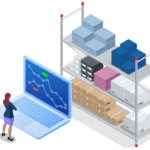You’ve come a long way and launched the application: you’ve found the market, made the terms of reference, prepared the layouts, found the dedicated software development team, and supervised the process. The product is ready and customers are already using it. Is it time to open the champagne? Not quite. Very soon you may need the resources of your programmers again: to develop new functions, fix bugs, and increase the system’s stability.
Support of the project is as important as the launch. Technologies become obsolete, the number of users grows. A product that suited you six months ago can fail today. So in this post, we’ll talk about the life of the project after launch: how to assemble the team and hire developers.

Do you need an in-house team?
No argument: having your own development team is emotionally satisfying. You can all plan features together, brainstorm, and discuss the future. You can even hand out options in a future unicorn to increase employee motivation. But also your own team is often unnecessarily expensive.
You can continue to outsource development in exactly the same way, with the same team you already worked with, or with a new one. If you have a product for which you don’t need to conduct long research and experiments, outsourcing development can be more profitable. An entire outsourced team can cost as much as one in-house developer.
Don’t start with a developer
If you have a good understanding of technology, can set the task, and evaluate the finished code, then of course you can look for a developer right away. But if your main focus is on business and operational tasks, it is better to start by finding someone who will directly lead the team: a technical director or a project manager. You can assign him to work on the technical part, and you can focus on the product part yourself.
Define a list of roles and prepare a job description
Determine the scope and nature of the work required to support the project. If you plan to develop many new features at once, you may need several developers of different profiles full-time. If you just want to keep the servers running, one full-time administrator is enough.
Select potential team members
Get feedback and filter out those who do not fit your profile or experience. Interview the rest. Here’s what to evaluate in a potential candidate:
Soft Skills. Is the developer involved in business goals or does he just want to code? Is he or she autonomous or does he or she need to be given specific tasks? Does his or her personality fit your project?
There are no good or bad answers here. For example, on one project it is important that the performer can make decisions by himself, while on another project, such autonomy will only interfere. So assess all the qualities based on your objectives and needs.
Technical skills. Make sure that the developer won’t have to redo everything: that he really knows the right technologies and can write working, maintainable code. To check this, you can give a test assignment.








